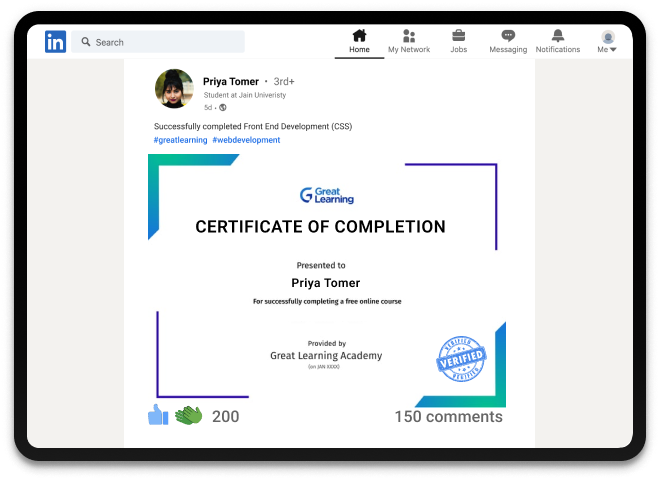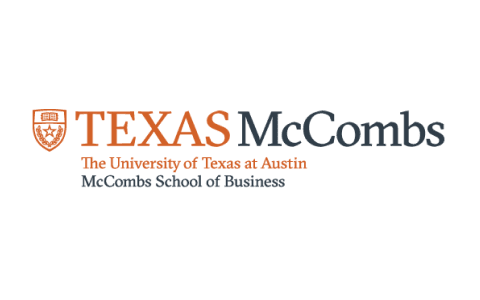Data Structures in C
Data Structures in C Free Course for Beginners
This free Data Structures in C course offers comprehensive lectures by experts with real-world examples on arrays, linked lists, stacks, queues, binary trees, and binary search trees. Start now!
What you learn in Data Structures in C ?
About this Free Certificate Course
Enroll in our data structures in c free course to secure a comprehensive foundation in this critical area of programming. This course aims to provide learners with an in-depth understanding of data structures, the core elements of programming languages. You will delve into essential topics such as arrays, stacks, queues, and linked lists, gaining practical knowledge and skills.
As the course progresses, it also covers complex data structures including heaps, hashing, binary search trees, and trees, enriching your learning experience with hands-on examples and demonstrations. Upon successful completion of all modules and the quiz, participants will receive a certificate, marking their achievements in this data structures free course with certificate.
Are you up for stepping into advancing your software skills? Great Learning offers highly appreciated Online Software Engineering Courses that will help you build your career. Enroll in the paid program of your interest and achieve a certificate.
Course Outline
Array is a collection of elements where the data types of all elements are the same. With the help of a C program, let’s understand what are arrays and how it works in the C language.
A linked list is a linear type of data structure that comes in handy while solving complex problems. This module gives a brief on the linked list along with discussing its advantages, disadvantages, and applications. You also have a demonstration on a linked list with the help of a code example.
Stack comes under a linear data structure and is known for its FILO/LIFO property. The module focuses on introducing you to stack and goes through its several advantages, disadvantages, and applications. You will also learn about its demonstration using an array with the help of a code example.
A queue is a linear form of data structure and follows the FIFO/LILO property. The module starts by giving you a brief on queue, its advantages, disadvantages, and applications. Lastly, you will have a demonstration of the queue using an array with the help of a code example.
A binary tree is a hierarchical and the most critical data structure. The course starts by familiarizing you with binary tree and binary search tree, their advantages, disadvantages, and applications. You will also have demonstrations of binary tree and binary search tree with the help of code examples.
Our course instructor

Mr. Bharani Akella
Data Scientist
With this course, you get
Free lifetime access
Learn anytime, anywhere
Completion Certificate
Stand out to your professional network
2.0 Hours
of self-paced video lectures
Frequently Asked Questions
What are the prerequisites required to learn this Data Structures in C course?
This free course is intended for beginners who may have little or no knowledge of Data Structures in C. Hence, this course has no prerequisites as learners will start learning from scratch.
How long does it take to complete this free Data Structures in C course?
This free course contains 2 hours of video content that addresses all the fundamentals of Data Structures in C. Learners can plan and learn according to their comfortable pace.
What are my next learning options after this Data Structures in C course?
Learners looking forward to improving their software skills can go through Great Learning’s Full Stack Developer Course. Enroll in this paid program to obtain advanced full-stack software development skills.
Is it worth learning Data Structures in C?
Data structures are the skeleton of any programming language. Thus, this free course is a good head start for the learners who wish to ace C programming, one of the well-established, flexible, and well-known programming languages.
What are Data Structures in C used for?
Data Structures in C are used for storing data in a specific format that can be accessed and worked with efficiently. Common data structures include arrays, linked lists, and trees, considered the building blocks of C programming.
Success stories
Can Great Learning Academy courses help your career? Our learners tell us how.And thousands more such success stories..
Related IT & Software Courses
Popular Upskilling Programs
Explore new and trending free online courses
Relevant Career Paths >
Other IT & Software tutorials for you
Data Structures in C
In C, data structures are used to store information in a logical and efficient manner. Many data structures are available in the C programming language, such as an array, stack, queue, linked list, tree, and so on. A programmer chooses an acceptable data structure and applies it to their needs.
Let us look into some of these data structures:
-
Array
-
Stack
-
Queue
-
Linked List
-
Trees
-
Hashing
ARRAY
An array is a collection of elements with the same data type that are settled and arranged in a logical order. In memory, they are organized in sequential order. An array is a data structure that holds elements of the same type. In C, unlike in Java, array elements are not recognized as objects.
Imagine you're in a music store, and I order you to stack all of the Casio keyboards, one on top of the other. An Array is a collection of records that are arranged in a logical order. An array is a collection of elements of the same data type that are arranged in a logical order. Casio is the data type in our example, and all of the keyboards you collected are from the Casio brand. A common name is used to address all of the elements in an array.
There are two types of arrays:
-
Single dimensional array
-
Multidimensional array
Advantages :
1) Data Access Code Optimization: Less code is required to access the data.
2) Ease of traversal: We may quickly obtain the items of an array by utilizing the for a loop.
3) Sorting is simple: We simply need a few lines of code to sort the array's components.
4) Random Access: The array allows us to access any element at any time.
Disadvantages
- The size is set.
- Inserting and deleting data is difficult.
- If capacity is more than occupancy, the majority of the array is wasted.
- To be allocated, contiguous memory is required.
Applications
-
For storing info or data in a linear fashion
-
Suitable for applications that entail frequent searching
STACK
stack is a data structure that is linear. It employs the last in, first out strategy. At the top of a stack, a new item is added. From one end of the stack, both insert and delete operations are done.
Stacks are used for two different purposes. To add elements to the stack, use the push function, and to remove pieces from the stack, use the pop function.
Advantages
-
Maintains data in a LIFO style
-
The last element is readily obtainable for use
-
All operations are of O(1) complexity
Disadvantages
-
Manipulation is constrained to the top of the stack
-
Not very flexible
Applications
-
Recursion
-
Parsing
-
Browser
-
Editors
QUEUE
A Queue is a data structure that stores a collection of elements in a linear fashion. The queue follows the FIFO (first in, first out) principle. The first element added to an array is also the first element withdrawn from the array in queues.
When things don't have to be processed right away, but rather in a First In First Out manner, like a breadth-first search, a queue is utilized. Queue's property makes it handy in situations when a resource is shared by numerous customers.
Advantages
-
Maintains data in FIFO style
-
Insertion from the beginning and deletion from the end takes O(1) time
Applications
-
Scheduling
-
Maintaining playlist
-
Interrupt handling
LINKED LIST
A data structure is known as a Linked List. It follows a set of rules. The Linked List is similar to an array, except it is not maintained in memory in sequential order. Every linked list has two sections: the data section and the address section, which contains the address of the next node in the list.
The linked list's size isn't predetermined, and data items can be added at any point along the way. The drawback is that in order to reach a node, we must go from the initial node to the desired node.
There are three types of link lists:
-
Singly link list
-
Doubly link list
-
Circular link list
Advantages of Data Structure using C
-
Adjustable in size.
-
There is no waste because capacity and size are always equal.
-
Simple insertion and deletion due to only one link change
-
Memory allocation is efficient.
Disadvantages of Data Structure using C
-
If the head node vanishes, the linked list is lost.
-
No random access is feasible.
Applications of Data Structure using C
-
Suitable where memory is inadequate.
-
Suitable for applications that necessitate frequent insertion and deletion.
TREES
A tree is a data structure with numerous sub-nodes and a single root node. Another data structure built on top of a linked list is the linked list.
Advantages
-
Data/Info can be represented as a relationship.
-
Insertion and search are significantly faster.
Disadvantages
-
Sorting is grim
-
Not much supple
Applications
-
File system grading or hierarchy
-
Multiple dissimilarities of the binary tree have a wide variety of applications
HASHING
Another type of data structure is the hash table. It's used to make an associative array, which is a type of data structure that can map keys to values. A hash table computes an index into an array of buckets using a hash function. Hash tables are a type of data structure that is extremely helpful.
Advantages
-
The hash function aids in fetching elements in constant time
-
A well-organized way to store elements
Disadvantages
- Collision resolution upsurges complexity
Applications
- Suitable for the application desires constant time fetching
About This Course
If you want to learn Data Structures in C online, this is an ideal place to kick start with. The presentation is 2.0 hours long and is presented in video format along with one quiz.
Introduction to Data Structures in C, Array, Linked List, Stack, Queue, Tree (Binary Tree and Binary Search Tree), Heap, Hashing, and Graph are all covered in detail in the Data Structures in C course curriculum. You will receive a certificate from Great Learning upon completion, which you can use on your LinkedIn page, printed resumes and CVs, and other documents.
Enroll in this free beginner Data Structures in C certificate course right away and get started learning.




















































